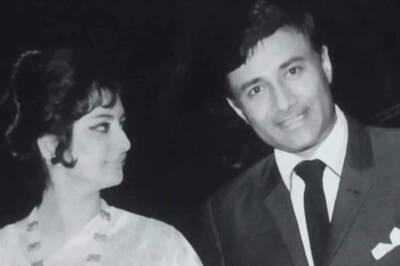
views
New Delhi: The war continues. RBI has been continuously showering interest rate hikes on the advancing inflation, making GDP growth the sacrificial lamb in the process. On Monday, RBI yet again spiked up rates another 25 basis points even as GDP growth targets were revised downward to sub-8 per cent levels. March-end inflation projection, nonetheless, remains unchanged at 7 per cent.
So the question now turns to the high cost of funds and effect it is likely to have on the industry. Experts worry that we could now be heading deeper into the whirlwind, towards a situation where demand starts to taper.
Speaking to CNBC-TV18, RK Bakshi, executive director of Bank of Baroda says that this policy could be a landmark for the banking industry with regard to the savings rate deregulation and formation of working group for credit pricing.
With respect to cost of funds and its impact on profits, he says that depends on how much the rate is hiked by. According the latest policy, investment up to Rs one lakh will return with same interest rate. "I don’t think up to Rs one lakh, even with the present 4 per cent rate of interest paid on daily balance basis, there is much scope to increase rate,” Bakshi says.
Meanwhile, Nilesh Shah of Axis Bank is all praise for the policy. Amidst its announcements, RBI on Monday hinted that the rate hike cycle could well have peaked and the probability of an action in the mid-December review is quite low. "It requires a lot of boldness to convey that there is low probability of rate hike in next quarter," Shah says. "Certain steps which have been taken in terms of developing fixed income market with regard to credit default swap and futures market are fantastic," he says. Shah expects RBI to pause hereafter and that should ensure that the growth which is right now on the receiving end starts getting supportive.
On banks, he says that they have a position to tackle whereby savings rate will get deregulated on one hand while on the other, there will be non-discrimination credit pricing coming into play. "Clearly banks will have to take out some amount of productivity gains to ensure that both these factors don’t impact the profitability and growth,” Shah says. "They will have to price their products properly," he says.
That exactly is the worry of the street that NIMs could see a compression and credit volume might not pick up as expected.
Romesh Sobti, managing director and chief executive officer, IndusInd Bank agrees that banks could face margin compression in the near-term if savings rate is hiked. "But banks will also have the freedom to moderate their transaction cost," he says. "So some extent, the cost increase will be absorbed through optimization of the cost of transactions," he says. He says that banks with bigger portfolios will need to rejig their business model accordingly.
Sanju Verma of Violet Arch Capital Advisors does not approve of the savings rate deregulation. "You cannot have savings rate deregulation without touching the other end of the spectrum with respect to transaction cost, recognition of NPAs, tweaking around with the SLR norms, all of which indirectly pad up the cost for banks," she points out.
"I am slightly surprised that after having announced a Rs 53000 crore additional borrowing on the part of the government just two weeks ago, the RBI has still chosen to go ahead and do this," she says.
It is to be noted here that the government had attributed the increased borrowing to the shrinkage of small savings to about Rs 26,000-27,000 crore. "Now, if you are going to deregulate savings rate from the current 4 per cent odd, what are you going to do with the PPF rate, the EPFO rate, the postal savings rate, the rate attracted by RBI bonds, the rate attracted by other tax free infrastructure bonds, because in some sense, all of these are linked and at least take a moral high ground from the savings rate,” she says. "So if you are going to have this savings rate tomorrow at 6 or 7 per cent speaking hypothetically, are you saying the EPFO rate will be going up from current 9 per cent to 11 per cent odd? Are you saying that the National Housing Bond tax free rates will go up from 7-8 per cent to 9 per cent? What about the RBI bonds themselves?," she questions. Verma thus thinks this has been a hasty decision.
She makes her point with picking out examples from the banking space. Union Bank’s second quarter addition to NPAs stood at a whopping Rs 1800 crore. The gross NPA is expected to stabilise at 2.5 per cent for the full year as per management comments. "But if you look at State Bank of Mysore, it had a huge provisioning and it added something like Rs 400 crore in a single quarter," Verma points out. Additionally, a study by CRISIL says that Rs 56,000 crore of power sector loans are likely to go bad. "Given this scenario, I am very surprised that RBI has chosen to do something which could be a precursor for further tinkering with a lot of other fixed rate instruments that will see a hike, such as CRR or NPA recognition norms," she says.
Economist Haseeb Drabu calls the policy a hip shooter's policy. “I would completely agree on this whole saving bank deregulation point made because it's linked to so many other rates. Enough homework doesn’t seem to have been done on either of these," he says.
Nevertheless, Rajiv Kumar, director general, FICCI makes peace with the fact that the interest rate cycle is peaking out. "It is a relief to notice that the governor has said that this is probably the last rate hike for a while and that December may not see it," he says.
"I would have been happier if the RBI had talked about the exchange rate, the rapidly depreciating rupee and that the RBI would not let that happen," he says.




















Comments
0 comment